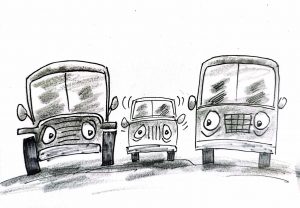Road widening projects in urban areas are often touted as a solution to traffic congestion and overcrowding on major thoroughfares. However, in many cases, the very purpose of these projects is swiftly defeated, as newly expanded roads become de facto parking areas for private vehicles. Tacloban City, for example, presents a glaring case of this phenomenon.
Despite efforts to improve the flow of traffic, the reality is that these widened roads often serve as little more than extensions of private driveways, particularly in neighborhoods where residents have no other space to park their cars. As a result, the expected benefits for motorists are lost, and the city is left grappling with the same problems it set out to solve. This leads to the exact opposite of what the project was supposed to accomplish: instead of easing traffic, the roads are choked with stationary cars, narrowing the lanes and making navigation even more difficult than before.
In theory, road widening is intended to create more space for vehicles to travel freely, reducing traffic bottlenecks and improving overall mobility. In practice, however, these newly widened roads often provide an irresistible convenience for residents living along these thoroughfares. With no strict regulations or enforcement, the added space is quickly appropriated for parking, especially at night when vehicle owners return home.
A drive around the city, especially in the evening, reveals long stretches of expanded roads lined with parked vehicles. During the day, the situation is slightly better, but the evenings see the roads clogged with cars, effectively reducing the width of the road back to its original size—or worse, making it even narrower due to the irregular parking of vehicles.
This not only negates the purpose of the road widening but also creates new hazards for motorists, who must navigate these obstacles at the cost of safety and convenience.
The failure of road widening in cities like Tacloban highlights a deeper problem: urban planning that focuses solely on expanding physical infrastructure without addressing the underlying behavioral and regulatory issues. It is not enough to widen roads if there are no parallel efforts to control how these spaces are used. Strict enforcement of parking regulations, the provision of alternative parking spaces, and a shift towards public transportation must accompany such infrastructure projects. Otherwise, the cycle of ineffective development continues, with taxpayers’ money spent on projects that offer no real, long-term benefits.




